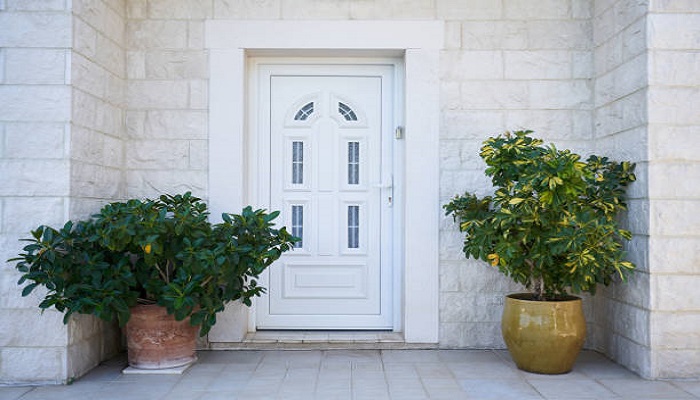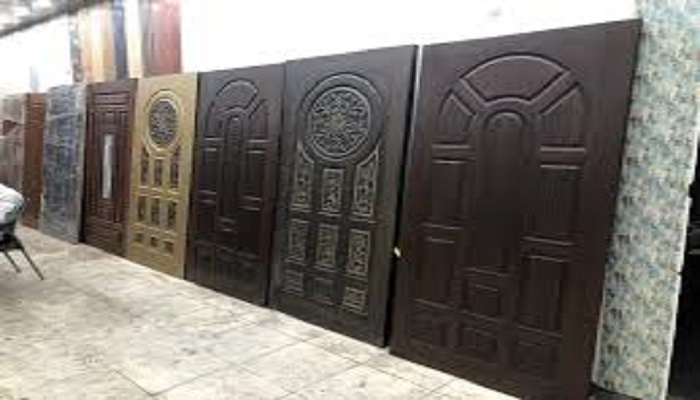Durable and Stylish PVC doors Perfect for Modern Home Interiors
In the realm of contemporary interior design, the selection of doors (which might seem trivial) plays a pivotal role in shaping both aesthetics and functionality of a space. Among myriad options available, PVC (Polyvinyl Chloride) doors have emerged as leading choices for homeowners, architects and interior designers alike. Renowned for their durability, cost-effectiveness and stylish appeal, PVC doors provide a modern solution that caters to the diverse needs of today’s homes. This article delves into why PVC doors are ideal for modern interiors: their numerous advantages and their ability to transform living spaces. However, understanding these benefits is crucial (because they can significantly enhance form and function). Although various options exist, the allure of PVC remains compelling, but it is essential to consider all factors involved.
Evolution of PVC Doors in Modern Design
PVC doors have evolved (considerably) over the years, transitioning from basic functional components to stylish and versatile design elements. Originally popularized for their affordability and low maintenance, today’s PVC doors incorporate advanced technology and design features that rival traditional materials like wood, metal (and) glass.
Manufacturers now offer a vast array of styles, textures and finishes; ensuring that PVC doors can seamlessly fit into any architectural theme. From minimalist and industrial designs to rustic and vintage aesthetics, it have become a go-to choice for creating personalized spaces. However, the evolution has not been without challenges: some consumers remain skeptical about the durability of PVC compared to its counterparts. Although advancements in manufacturing processes have improved the strength of these doors, (this) ongoing debate continues to fuel discussions in design communities.

What Makes PVC Doors Unique?
Polyvinyl Chloride (PVC) is a synthetic plastic polymer recognized for its resilience, versatility and eco-friendliness; however, these characteristics allow PVC doors to stand out in the competitive domain of home construction and interior design. Let’s delve deeper into what distinguishes them:
Exceptional Durability
it exhibit considerable resistance to environmental factors (including moisture, heat and UV rays). However, unlike wooden doors (which may warp or swell because of humidity), PVC doors maintain their structure and finish even in harsh conditions. This quality renders them particularly suitable for bathrooms, kitchens and outdoor applications.
Lightweight Construction
Although they exhibit remarkable durability, PVC doors are surprisingly lightweight (this makes them easy to handle, install and transport). This characteristic not only simplifies the installation process; however, it also reduces labor costs, because of their unique composition. However, some may argue that traditional materials provide a sturdier feel, but the benefits of PVC cannot be overlooked.
Versatile Design Options
PVC doors present myriad designs (1), including textured finishes that mimic wood, smooth plain panels and options adorned with glass or metal accents. However, this versatility allows homeowners to coordinate their doors with various interior themes effortlessly; although some may find it challenging. The options are vast (2), but the selection can become overwhelming.
Eco-Friendly Manufacturing
PVC functions as a recyclable material (thus positioning it as an environmentally conscious choice). Many manufacturers (now) utilize sustainable practices to mitigate the ecological impact of production; this aligns PVC doors with green building initiatives. However, challenges remain because some still perceive PVC as detrimental. Although progress has been made, further innovations are required to enhance sustainability.

Advantages
The benefits of PVC doors extend far beyond (their) durability and stylish appearance. Let’s explore (the) practical advantages that make them a superior choice for modern interiors: however, low maintenance requirements are particularly noteworthy. This is significant because (they) resist wear and tear effectively, which is essential in high-traffic areas. Although some may question aesthetic appeal, PVC doors can be quite elegant, blending seamlessly with various design themes. Moreover, they offer energy efficiency, which contributes to lower utility costs. However, it’s important to consider the environmental impact of PVC materials; thus, informed choices are necessary.
Cost-Effectiveness
In comparison to traditional materials (such as solid wood or wrought iron), PVC doors are (significantly) more affordable. This cost advantage (1) makes them an attractive option for budget-conscious homeowners; however, it does not compromise quality or style. Although some may prefer the aesthetics of wood, many find that PVC presents a compelling alternative. Because of this, the popularity of PVC doors continues to rise.
Low Maintenance Requirements
PVC doors are remarkably simple to maintain (this being one of their key advantages). They do not necessitate periodic polishing, painting, or sealing (unlike wooden or metal doors). A straightforward wipe with damp cloth is sufficient to keep them appearing as good as new; however, some may argue that they lack the aesthetic appeal of traditional materials. Although practical, it is important to consider personal preference when selecting door.
Enhanced Safety Features
Numerous PVC doors (crafted with sophisticated locking mechanisms) feature reinforced cores; this provides excellent security for homes. However, their resistance to termites and corrosion ensures long-lasting safety. Although these attributes are significant, some homeowners may overlook the importance of regular maintenance (because it’s essential for preserving their integrity).
Thermal and Sound Insulation
PVC serves as an exceptional insulator (1) due to its superior thermal and acoustic properties. By installing PVC doors, one can effectively maintain indoor temperatures; moreover, it reduces external noise. This results in a more comfortable (and inviting) living environment. However, it is crucial to consider the long-term durability of the material, although it typically performs well. Because of these advantages, many homeowners are increasingly opting for PVC solutions.
Moisture and Weather Resistance
PVC doors (extensively used) are impervious to water, making them ideal for high-moisture areas (such as bathrooms and kitchens). However, they also withstand harsh weather conditions; this guarantees durability in outdoor installations. Although frequently chosen for their practicality, some may overlook their aesthetic appeal. Because of this, it is essential to consider not just functionality, but also style when choosing these doors.

Applications in Modern Interiors
Main Entrance Doors: PVC doors (which feature decorative panels or glass inserts) create striking entrances. Their durability ensures they withstand external elements; however, they also maintain an inviting appearance. Interior Doors are essential for bedrooms, living rooms, or hallways: PVC doors offer a sleek (and contemporary) aesthetic. Their lightweight nature makes them easy to operate, ideal for frequent use, because they allow for effortless movement. Bathroom Doors present a unique challenge—bathrooms demand doors that resist moisture and humidity. PVC doors excel in this regard (as they remain unaffected by water exposure) and do not swell or warp. In kitchens, where spills and stains are common, it provide a practical solution: they are easy to clean (and laminated add an extra layer of stain resistance).
